The steep cost of Type 2: When diabetes dragged her down, she chose to fight
Editor's note: Part four of a five-part USA TODAY series revealing why America hasn't solved its long struggle with Type 2 diabetes.
PHILADELPHIA – Sunflowers are everywhere in Keenya Taylor’s cozy northeast side kitchen.
They line the curtains framing the window above her farmhouse sink. They hang as kitchen towels draped over her stove handle and brighten the kitchen mat that reads, “This Is Home.”
“Sunflowers make me happy. You need something happy when you’re dealing with this disease,” she said while counting out pills from five bottles to manage her Type 2 diabetes.
Taylor, 52, plans out every second of every minute, from the time she wakes up at 4 a.m. to the time she goes to bed exactly an hour after dinner. Her diabetes doesn’t leave much room for spontaneity.
Living with a chronic disease like diabetes in the United States is painstakingly complicated, from accessing medications and medical devices to navigating insurance companies, pharmacies and specialists.
The disjointed and confusing health care system leaves patients to their own devices, managing medications, doctor’s appointments and copays, calling insurance and drug companies, and planning every meal down to the last gram of carbohydrate.
“It’s a 24-hour, seven-days-a-week job,” Taylor said. “One wrong step can lead you to be really sick or having a medical emergency.”
Patients are finding even less support as health care systems report doctor shortages across the country, leading to long appointment wait times, and experts say physician burnout will only make the problem worse. By 2034, the U.S. is expected to see a doctor shortage in non-primary care specialties as high as 77,000.
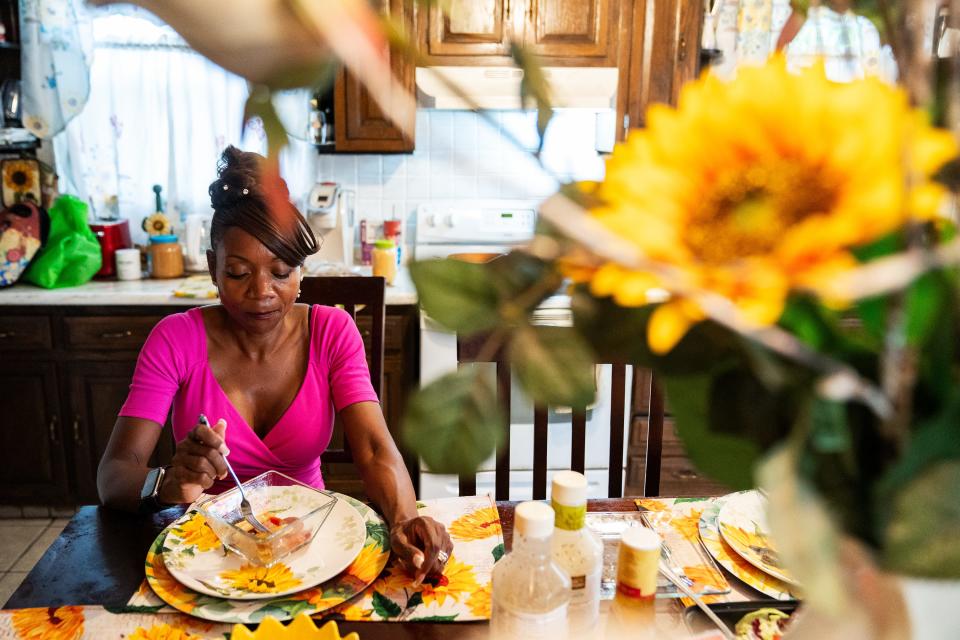
"Our way of delivering care for people with chronic diseases is not built around them and their lives," said Dr. Mark McClellan, a former commissioner of the Food and Drug Administration and now a professor of health policy at Duke University. "The more people have to go out of their way to go to a doctor's office, get individual prescriptions filled and manage all the other health problems they have, the tougher it is to manage."
Despite the obstacles, Taylor is determined to effectively control her Type 2 diabetes, by far the most common form of the disease. Her mother was diagnosed with it and died at age 46 from pancreatic cancer, a complication that may be linked to diabetes. But Taylor saw a different life for herself when her diagnosis came at 41.
"I went through a lot of depressive moments until I just had to realize that I had to either let it take me or fight," she said. "I chose to fight."
'A constant battle'
Metformin and Jardiance for her diabetes. Omeprazole for acid reflux. Lipitor for her cholesterol. Taylor separates the pills one by one and pops them into her mouth.
She pulls a pre-filled syringe of Ozempic from the top shelf of her refrigerator door. Every Wednesday, she uses the highlighter-sized device to inject a 2-milligram dose of the medication.
She looks at her reflection in the dark kitchen window as she pulls up her leopard-print dress shirt, presses the auto-injecting pen into her belly, and patiently waits for the medication to drain with rapid-fire clicks.
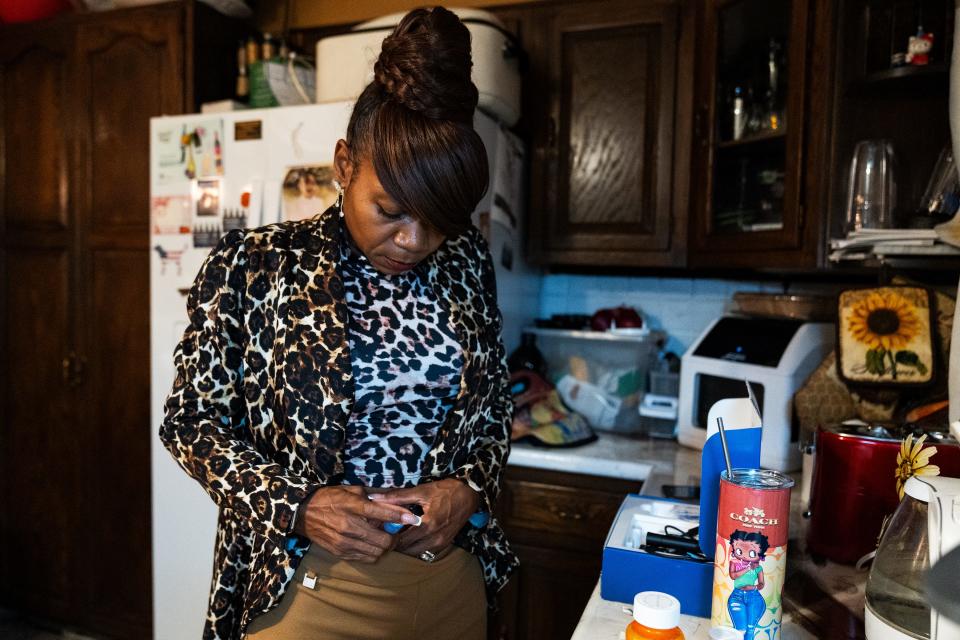
The metformin, omeprazole and cholesterol medication are nearly $2,000 out-of-pocket for a 90-day supply. The Ozempic alone, which is a brand name for the generic diabetes and weight-loss drug semaglutide, costs almost $3,000 for a 90-day supply while the Jardiance runs about $2,100. She also takes nightly insulin, which costs about $500 for three months. Throughout the day, she relies on her continuous glucose monitor to send her updates directly to her phone. The patch device runs at about $90 for two 14-day sensors.
Most of her expenses are covered by insurance but her plan has a yearly cap. Her insurance won’t cover more than $25,000 of health expenses per year, and after paying thousands of dollars each month on diabetes drugs, not to mention hundreds more on doctor visits, Taylor typically hits the cap before the fiscal year ends.
"It's a constant battle," Taylor said. "It takes time ... you have to do so much leg work."
In particularly tight times, Taylor has resorted to contacting medical device and drug companies for discount cards and coupons. She's also asked her doctors for samples. That typically works for medications like metformin and omeprazole, but recently it’s been tougher to get a hold of popular big-ticket items like Ozempic.
The Diabetes Dilemma
Type 2 diabetes rates continue to climb, despite well-known treatments and prevention approaches. To better understand why, USA TODAY's health team traveled across the country, talking to researchers, clinicians and patients. They found people with diabetes often must fend for themselves against systemic barriers and a difficult disease.
“A lot of the newer medications for diabetics – which are good medications – are beyond the reach for a lot of patients because the copays are so high for those drugs,” said Dr. Mark Schutta, medical director of the Rodebaugh Diabetes Center at Penn Medicine. “And it’s not just troublesome for patients, it’s a struggle for providers because we have to fill out the prior authorizations and the backline work to get these drugs or monitors in the hands of patients.”
The total cost of diabetes in the United States has risen from $245 billion in 2012 to $327 billion in 2017, according to the most recent estimates from the American Diabetes Association. Ozempic, which likely drove those costs higher, was first approved for sale in 2017.
Ozempic is hard to get even with a prescription and adequate coverage. Demand for both it and its sister weight-loss drug Wegovy has created a longstanding shortage.
Taylor has noticed her sugars creep up when she goes without the drug for a month or two, even while maintaining her regimented diet and active lifestyle.
“I don’t have $2,500 sitting in my bank account to pay for pens,” she said. “I’m sure if my life depended on it, if I was going to die tomorrow, you’d find the money. But most people don’t have that just sitting to pay for medication.”
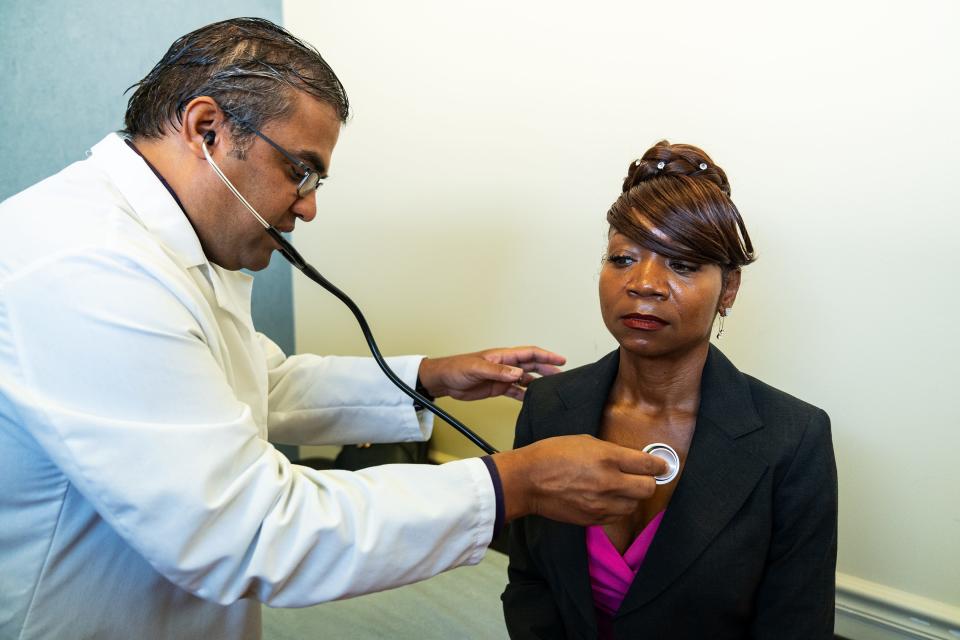
'A whack-a-mole game'
Every year come January, Taylor begins her rounds of doctors' appointments.
She has a doctor for everything – her eyes, feet, heart, lungs, women’s health, primary care and a diabetes specialist she sees four times a year.
“Diabetes affects every part of your body,” she said. “I go to every doctor because I would rather know something ahead of time than find out when it’s not too late but maybe harder to fight things.”
It’s taken years for Taylor to master navigating the health care system to prevent lapses in care, and unfortunately, that’s meant a lot of hard lessons learned along the way.
The U.S. health care system doesn't make it easy for patients to manage their diabetes. A lack of coordination and organization among doctors and specialists, insurance companies, pharmacies, and drug companies makes it harder for Taylor and patients like her to manage chronic diseases like diabetes.
She’s learned to be persistent, advocate for herself, and keep organized and meticulous records of her condition to help keep all her providers on the same page.
More in series: American can prevent (and control) Type 2 diabetes. So why aren’t we doing it?
“It’s their job, but it’s my life. So, I just take it as that,” Taylor said. “The squeaky wheel always gets the oil.”
While patients feel frustrated, physicians feel like their hands are tied.
Despite updated electronic health records and telehealth appointments, providers still feel bogged down by the bureaucracy of insurance and health systems.
“The hope had been that computerization would free us up of a lot of the paperwork tasks and provide more time to sit down and look a patient in the eye and hear what’s going on empathically,” said Dr. Robert Wachter, chairman of the department of medicine at the University of California, San Francisco. “The truth has been mostly the opposite.”
Even just diagnosing diabetes and initiating the first phases of treatment has become a multilayered process in order for insurance to cover testing and medications, said Dr. Ashish Rana, a primary care physician in Crum Lynne, Pennsylvania, about 30 minutes south of Philadelphia.
Doctors diagnose diabetes with a blood test, called an A1C, which measures the percentage of red blood cells that have sugar-coated hemoglobin. An A1C between 5.7% and 6.4% indicates prediabetes; a 6.5% and higher is considered diabetes.
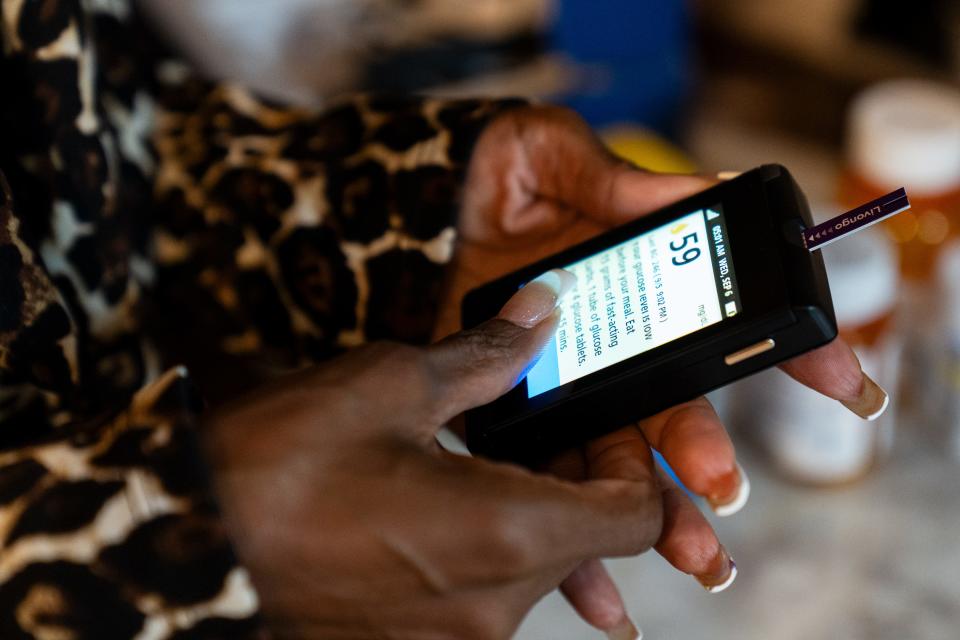
However, insurance companies won’t cover this test unless another blood test shows a patient has elevated blood sugar or is experiencing other symptoms related to diabetes like increased hunger, thirst, or frequent urination.
“We can’t just order it because we suspect it. Otherwise, the insurance company won’t pay the bill for the test and the patient will be hit with a significant bill,” Rana said.
These types of obstacles exist in nearly every part of health care, from diagnosis to treatment. Providers are forced to prescribe generic medications before insurance will cover more effective, brand medications or fill out prior authorization forms.
More in series: Diabetes runs deep in rural Mississippi. Locals have taken to growing their own solutions.
In some cases, insurance stops covering certain procedures and medications without warning. Doctors say they spend an increasing amount of time on the phone with companies to make sure their patients can access affordable drugs. Rana calls it "a whack-a-mole game."
The incessant paperwork interrupts valuable patient care, delaying diabetes management and treatment, which could make the disease worse.
“For most physicians, the time they get to spend with their patients is a source of professional satisfaction,” Wachter said. “All the bureaucratic hoops are really frustrating to physicians and in many cases do bleed into the relationship they have with their patients.”
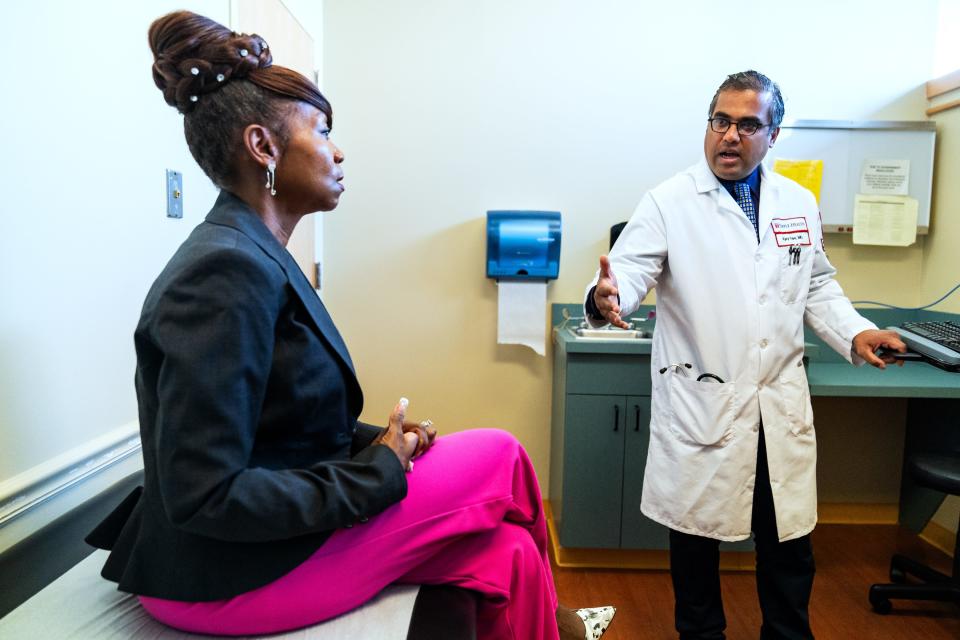
'Shortages everywhere'
Taylor shifted her weight uncomfortably as she sat on the thin paper sheet covering the exam room table.
She had already reviewed her numbers and knew what she wanted to talk to her diabetes doctor about.
After years with stable A1C and blood sugar levels, Taylor had been having trouble regaining control after a bout of COVID-19 last summer. She hadn't changed her lifestyle, her diet, or medications, but for some reason, she couldn't get her A1C under 8%.
And now, her high blood sugar was starting to impact her liver function.
More in series: A diabetes disparity: Why Colorado's healthy lifestyle brand isn't shared by all
“It’s upsetting,” Taylor said, tears prickling the corners of her eyes. “After all of that, I’m not where I want to be … It’s frustrating. All I can do is keep fighting.”
Her endocrinologist, Dr. Ajaykumar Rao, walked into the exam room greeting Taylor with a big smile. He sensed Taylor’s frustration but reminded her that despite the setback, she was still on the right track.
“It can be very discouraging if you’re not seeing the improvements that you’re expected to see,” said Rao, who is also section chief of endocrinology, diabetes and metabolism at Temple University Hospital and associated professor of medicine at the university’s Lewis Katz School of Medicine.
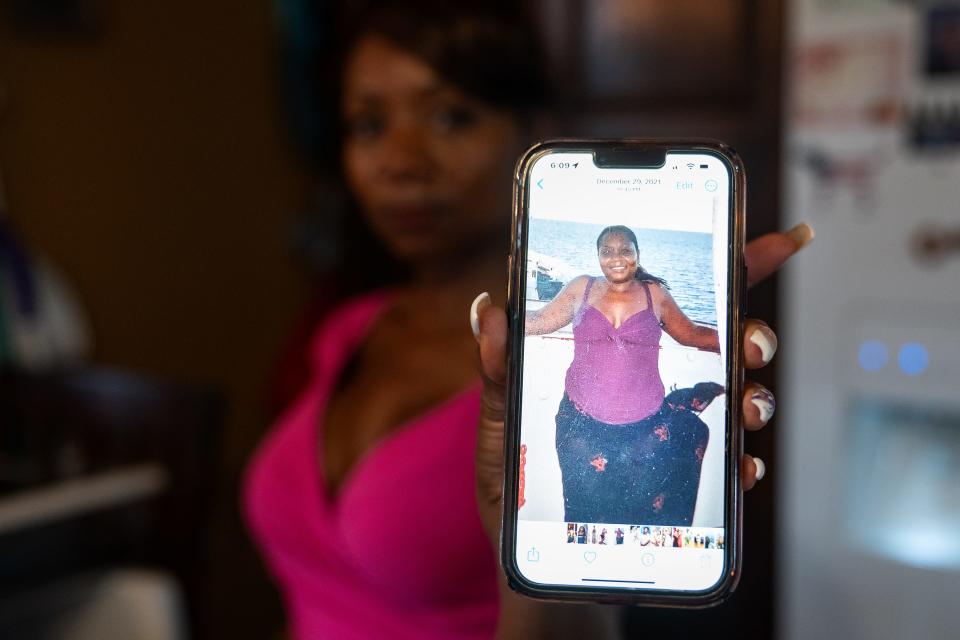
He prescribed her a different insulin medication to take at night and validated her concerns about COVID-19. The National Institute of Diabetes and Digestive and Kidney Diseases launched a study that aims to learn more about how COVID-19 impacts diabetes patients.
A look of relief washed over Taylor's face.
“I finally found a doctor who would listen,” Taylor said. “He let me decide whether I wanted to just go straight to his medicine or try some other methods … He was willing to do that.”
It took a while for Taylor to find Rao. For seven years, she bounced from provider to provider trying to find someone who would help manage this disease with her.
“You’ll find an endocrinologist and then they would move and leave, and settle practice somewhere else or they were no longer in the health care system that my insurance was in,” Taylor said.
Studies show delays in care may increase disease and death risk among patients with underlying, preventable, and treatable conditions. Half of diabetes-related lower leg amputations could have been prevented with appropriate medical care, a 2021 study found. But experts say there are just not enough specialists available to meet the growing demand. Some attribute this to the worsening physician shortage.
“There are shortages everywhere,” Wachter said. “Physician burnout rates are very high. Patients are feeling that. Doctors are being asked to do more and more in less time.”
The American Medical Association calls physician burnout an epidemic in the U.S. health care system, with nearly 63% of physicians reporting signs of burnout such as emotional exhaustion and depersonalization at least once per week.
Patients who can’t access timely care from specialists tend to look to their primary care providers for help. But Rao said the brunt of care really falls on patients and their ability to self-manage between appointments, which are typically few and far between.
“A lot of that burden we’re putting on patients,” he said. “Patients have to take a huge responsibility in managing their own health. That can be overwhelming for patients.”

'Healthy is always more expensive'
Taylor furrowed her brow reading through the nutrition label on the side of a chickpea pasta box.
“I’m portioning out my carbs for the most part because those are the things that turn into sugar quickly,” she said. “You’re always going to have carbs with pasta but the key is to find something that’s high in protein.”
Satisfied with the protein content, she tossed the box in the grocery cart and strolled through the supermarket aisle, strutting the snakeskin heels she’d been wearing throughout her 10-hour workday.
She repeated the routine with every item she grabbed from the shelves. Some she put back, while others she tossed into the cart for her Friday night dinner: A sausage and peppers pasta and a side salad.
More in series: Solutions exist to end the Type 2 diabetes dilemma but too few get the help they need
Despite only getting what she needed for dinner, plus yogurt, protein cookies, milk and a few cases of water bottles, the bill exceeded $100.
“Healthy is always more expensive,” she said, forgoing the $1.99 grocery brand milk for the $4.99 milk with 13 grams of protein.
There’s no way Taylor would have been able to control her diabetes while raising her five children. But she said managing a big family while working full-time prepared her for this next phase of life.
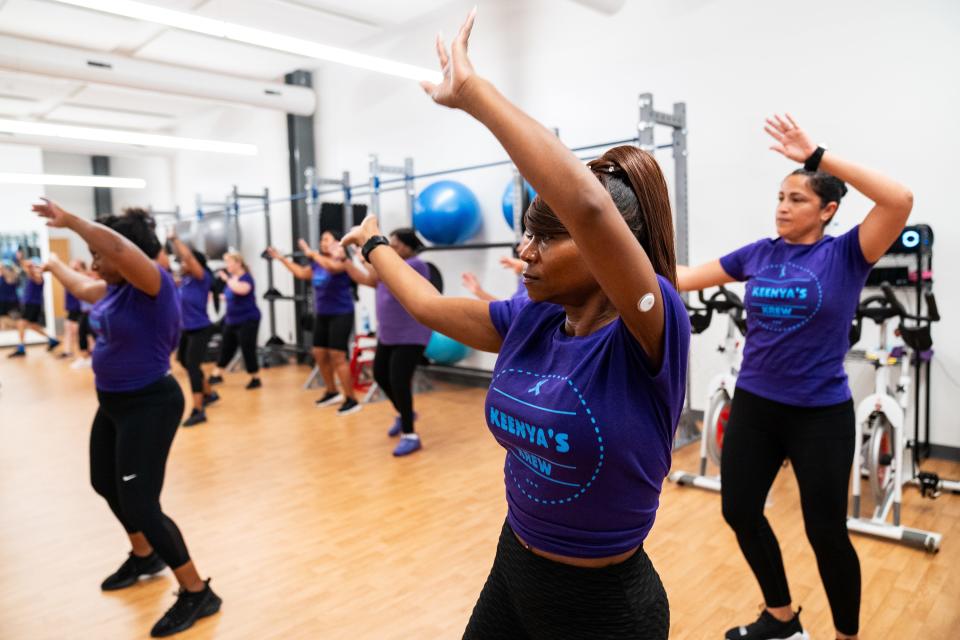
'I want to live'
Taylor goes to a Zumba and weight training class three times a week. Like many starting their fitness journey, Taylor was hesitant to go to the gym when she was diagnosed with diabetes. She tried fiddling with machines and weights but nothing stuck quite like Zumba. She was hooked after her first class.
It’s the only thing about managing her diabetes she actually enjoys.
“When I found that group, it just made it not a job because I had enough of a job managing this disease,” she said. “I needed more of an inclusive family-type environment. Zumba is like a family."
On a recent Thursday evening, she arrived with guests and was surprised to be greeted by classmates wearing purple T-shirts that read “Keenya’s Krew” in light blue with the diabetes ribbon on top.
Throughout the 55-minute class, her energy never waned. She mouthed along with the words of the song as her high ponytail bobbed up and down with the moves. The dancers applauded at the end of every song, their chests heaved and their brows sprinkled with sweat. Finally, the instructor asked for any song requests.

“Lizzo!” Taylor yelled. The class groaned lovingly. Everyone knows Taylor loves the squat-heavy routine. Although their glutes suffered, they all complied because it was Taylor’s day - she'd brought visitors to show off her favorite class.
At the end, the dancers surrounded Taylor and enveloped her in a group hug. Overwhelmed by the love and support, she wiped away tears as she reminded her classmates to save their T-shirts for the first week of November, which marks Diabetes Awareness Month.
When asked how she stays motivated to regularly exercise, eat carefully, keep up with doctor visits, take medications faithfully and maintain such a regimented schedule, Taylor's answer is simple: She wants to live a long, full life.
“This disease can take you. It can take you quick, fast. It can take you slow and painful," she said. "In order for me to do these things – to see my children, to retire someday, to live a happy life – I have to manage it.”
Follow Adrianna Rodriguez on X, formerly Twitter: @AdriannaUSAT.
This story is part of a reporting fellowship sponsored by the Association of Health Care Journalists and supported by the Commonwealth Fund.
Health and patient safety coverage at USA TODAY is made possible in part by a grant from the Masimo Foundation for Ethics, Innovation and Competition in Healthcare. The Masimo Foundation does not provide editorial input.
This article originally appeared on USA TODAY: Managing Type 2 diabetes is complicated. And it’s likely to get worse.

